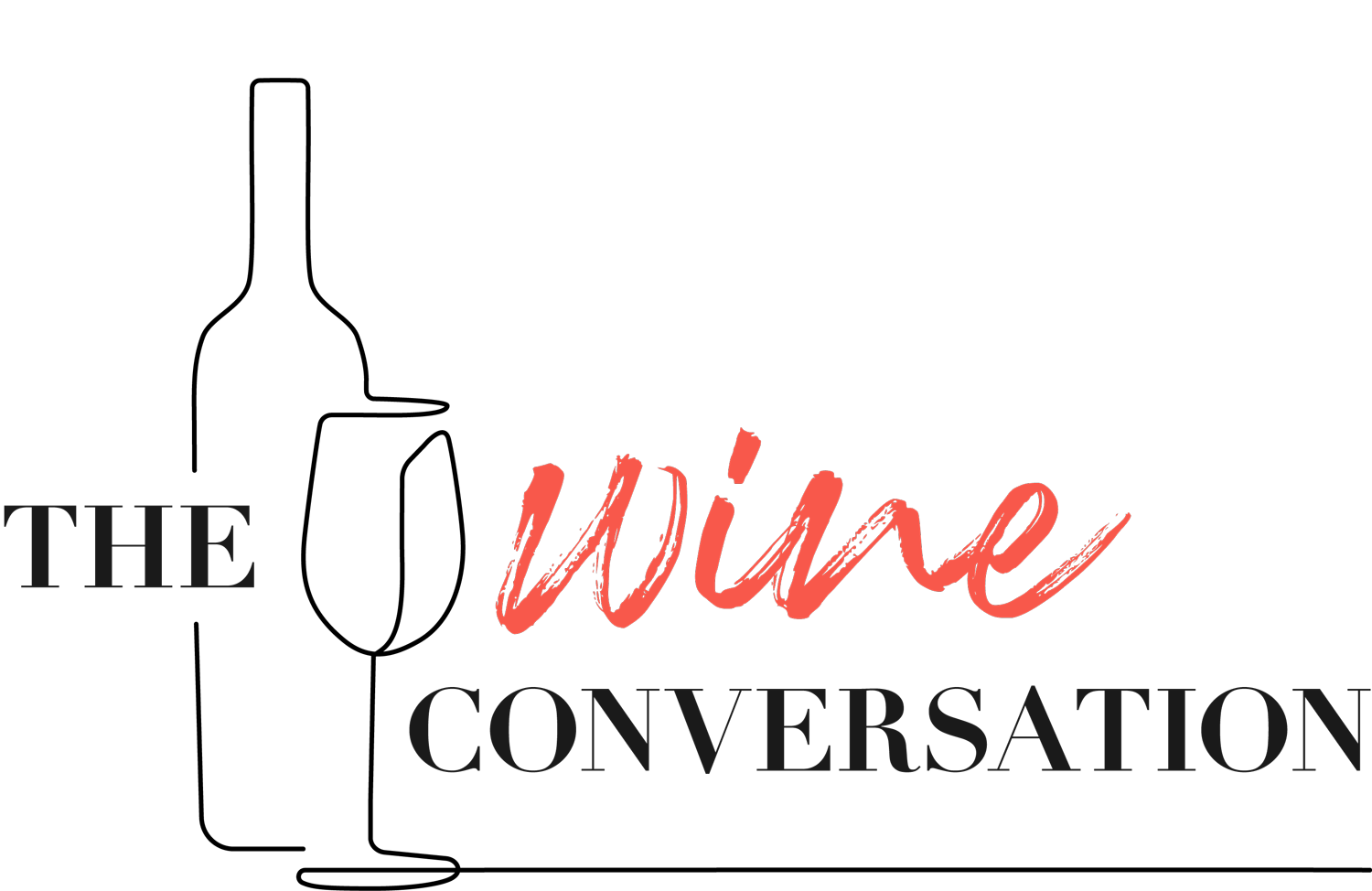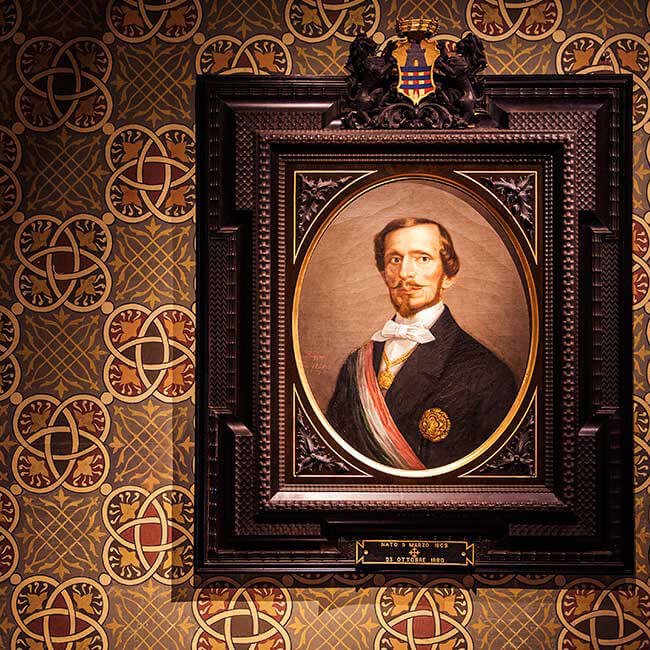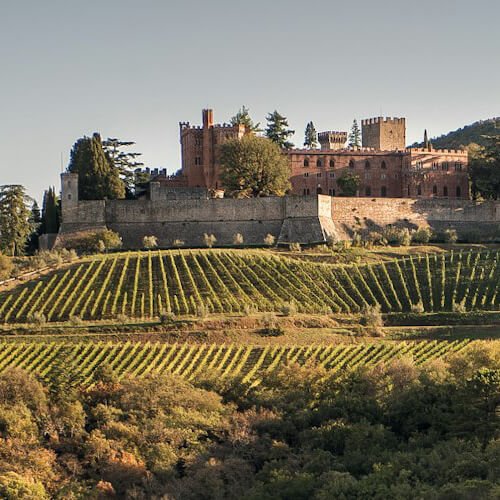▻ Francesco Ricasoli
In conversation with Francesco Ricasoli
Episode Summary:-
Francesco Ricasoli grew up in one of Tuscany’s oldest and most noble families, who have owned large tracts of land between Florence and Siena for centuries. The first mention of their link to wine was in 1141, and their home Castello di Brolio, with its striking façade, is one of the icons of Tuscany. Francesco’s great-great-great grandfather was the second Prime Minister of the newly formed kingdom of Italy, but as well as a being a politician he also played a fundamental role in the revitalisation of viticulture, and originated the formula for Chianti wine, now called Chianti Classico. In this edition of “Great Wine Lives” Sarah Kemp travels to Tuscany to talk to Francesco about his family and how he has spent the last 30 years restoring the vineyards after his father sold the brand name and winery to the corporate giant Seagrams back in the 1960s when Francesco was a teenager.
As the youngest of four children, he had no thoughts about working at the winery; as a young man, he headed off to pursue a career as a photographer, and was greatly in demand, working with famous names such as Salvatore Ferragamo and Valentino. He tells Sarah he didn’t want to buy the company back, but in the 1990s he feared his family was going to lose everything. He talked with his father and laid down certain conditions: “In 1990 I realised certain options were very risky, maybe I will try and give my contribution…I might join my father but I want to be free to take any decision which is appropriate, so I don’t want any interference and I want maximum power. He said yes and I said shit, I have to do it--I sold the studio, I couldn’t go back.”
Francesco returned to a rundown estate and a brand which was no longer an icon of Italian wine, Seagrams had sold it on, to the Australian giant Hardy’s, and between them they expanded production, lowered quality, and made it into a mass-market brand sold at supermarkets. Francesco started putting together a team in 1993 to help him restore the reputation of the estate. Filippo Mazzei, a family friend and owner of historically notable Castello di Fonterutoli, gave business advice, and Carlo Ferrini, the renowned consultant, joined to help with reviving the vineyards.
To begin with, he did not have a vision for the wine: “The vision came later, at the beginning we were just trying to save what had to be saved,” he says. One of his first tasks was to understand the soil, and he employed the National Centre Research of Geology to analyse the estate, which consists of 1200 hectares, with 240 under vine, surrounded by forests. They found 19 different soils with five macro groups; sandstone, schist, limestone, marine deposits and, on the valley floor, ancient fluvial deposits. These distinct soil types provided the basis of the single-cru programme, three distinct wines reflecting their soils. Barone Ricasoli Colledilà, Barone Ricasoli Ronicone, and Barone Ricasoli Ceniprimo; all three are Chianti Classico DOCG Gran Seleziones. Francesco describes the Colledilà, which comes from limestone soil, as the most classic, Roncione comes from sea-bed soils and the wine demonstrates a more mineral, saline approach, with a floral freshness, whereas the third wine, Ceniprimo, is more opulent, with an intensity of fruit which comes from the fluvial soils.
““The vision came later, at the beginning we were just trying to save what had to be saved.””
Experimentation and testing is a core philosophy of Franceso’s approach: “If you don’t experiment you don’t get to do more and more fine tuning,” he says. One wine, in particular, took many years in the making – Castello di Brolio SanBarnaba, a 100 percent Trebbiano, white wine vinified in a coccioesto amphora and aged in amphora, stainless steel and once- or twice-used tonneaux. He reveals he was not optimistic about the team’s attempt to create a 100 percent Trebbiano, and was concerned that it would be an orange wine. The first vintage was in 2020, from a massal selection of heritage vines. He is happy with the result, and its ability to age. It’s very perfumed, and Sarah finds it reminds her of biting into a Cox’s apple. He believes most fine white wines are drunk too cold, and advocates serving them between 12-13 degrees Centigrade. Currently he is experimenting with an air-pressure system within the stainless-steel tanks (clean air is pushed up from the bottom of the tank); two tanks have been tested, and now they are waiting to see the final results against the same grapes handled traditionally.
He is driven by the great satisfaction he derives from returning the estate to its historic iconic status, and leading its renaissance and rebirth. Social responsibility is important to him too, and he is proud of being awarded the Welfare Leadership Champion in the agriculture sector. Today the estate is back at the top of its game – the wines are winning accolades, there is a terrific restaurant, Osteria di Brolio, with one of Tuscany’s most exciting chefs, Franco Sangiacomo at the helm. Brolio is buzzing, with a café, a visitor centre which attracts over 10,000 visitors a year, and offers innovative tastings. “I am at the service of Castello di Brolio,” Francesco says with a smile, as he looks back at 30 years of work restoring one of Italy’s most famous names.
Running Order:-
-
0.00 – 20.20
“The vision came later. At the beginning we were just trying to survive, to save what had to be saved.”
– The family’s historic links to the region.
– Barone Ricasoli creating the formula for Chianti wines.
– The family sells the brand and vineyards to Seagrams in the 1960s.
– Life as a professional photographer.
– The decision to return and buy back the brand and vineyards.
– Difficulty buying back the company.
– Putting the new team in place. -
20.21 – 42.35
“If you don’t experiment, you don’t get to do more and more fine tuning.”
– Analysing the soil with the National Centre Research Geology.
– The five macro soils at the estate.
– Developing the three single crus.
– The stylistic differences between the crus.
– Creation of San Barnarda, the 100% Trebbiano.
– Experimentation and the new air-pressure system.
– Francesco’s belief in social responsibility.
– What Francesco is most proud about.










Alexander Van Beek, Estate Director of Château Giscours and Tuscan estate Caiarossa.